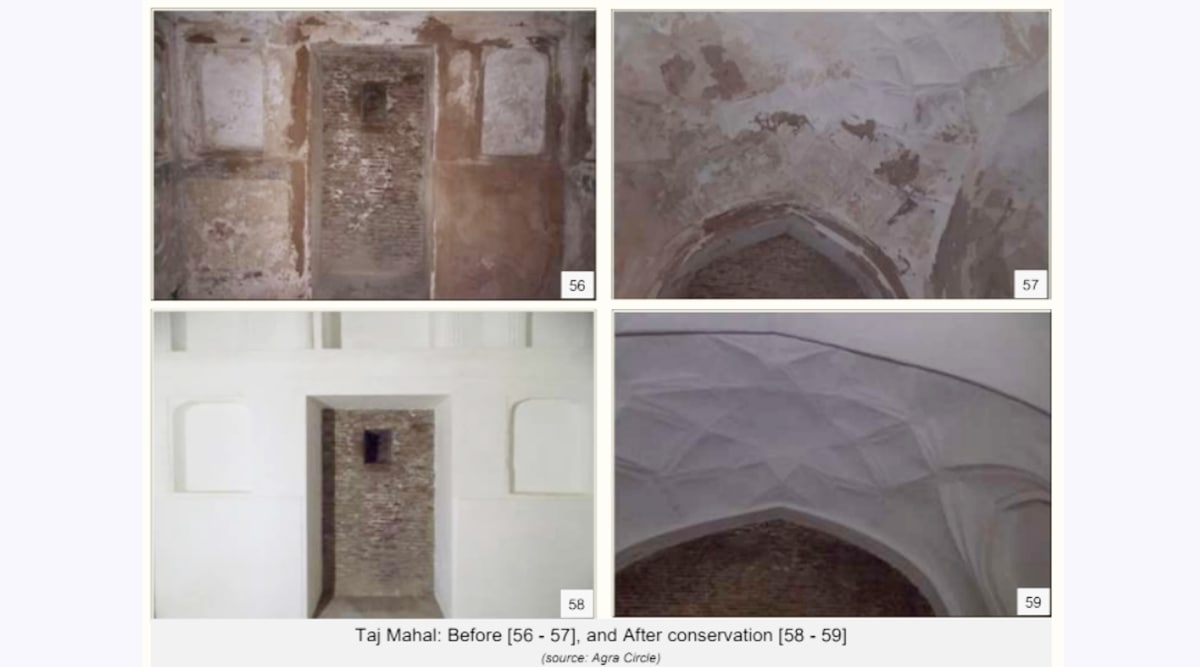 Photographs of Taj Mahal’s underground cells, as shared in the ASI newsletter.
Photographs of Taj Mahal’s underground cells, as shared in the ASI newsletter.Just six days ago, as the controversy over the 22 locked rooms in the basement of the Taj Mahal was raging—inside the courtroom and outside—the Archaeological Survey of India (ASI) released some photographs of these cells.
On May 12, the Lucknow bench of the Allahabad High Court had rejected a petition seeking a fact-finding inquiry into the “history” of the Taj Mahal and also opening of the doors of its “22 rooms” to see “the truth, whatever it is”.
The writ petition was filed in the Lucknow bench by Rajneesh Singh, media in-charge of the BJP’s Ayodhya unit, contending that the Taj Mahal was a Shiva Temple known as Tejo Mahalaya, asking for the government to constitute a fact-finding committee to publish the “real history” of the monument.
After the court order, ASI officials had maintained that there is no secret in those rooms, they are just part of the structure, and are not unique to the Taj Mahal, but several Mughal-era mausoleums built at the time—including Humayun’s Tomb in Delhi.
Best of Express Premium
“The work of maintenance of underground cells on the river side was taken up. Decayed and disintegrated lime plaster was removed and replaced by laying of lime plaster and traditional lime processing before application,” said accompanying text, while four photographs of the basement cells, “before” and “after” conversation, were published alongside in the organisation’s newsletter.
Even as ASI officials insist the “January newsletter has been in the public domain ever since”, it was released by the agency on its website on May 5 and tweeted on its official handle on May 9.
About the released photos, officials from the ASI’s Agra Circle told The Indian Express that every month, each of the circles sends “highlights of work done under their purview to the Delhi headquarters, some of which is then included in the ASI’s newsletter”.
“It was between December 2021 and February 2022 that conservation work was carried out at those cells. The published pictures were from December 2021; even after that a lot more work was done and pictures were taken. Whether they find space in the next issues of the newsletter will be an editorial decision,” says the official from the Agra Circle.
“It is not just Taj Mahal; we did work at Jama Masjid, Itmad-ud-Daulah and the Agra Fort, and some of those pictures have also been published in the said issue,” he adds.
- The Indian Express website has been rated GREEN for its credibility and trustworthiness by Newsguard, a global service that rates news sources for their journalistic standards.

